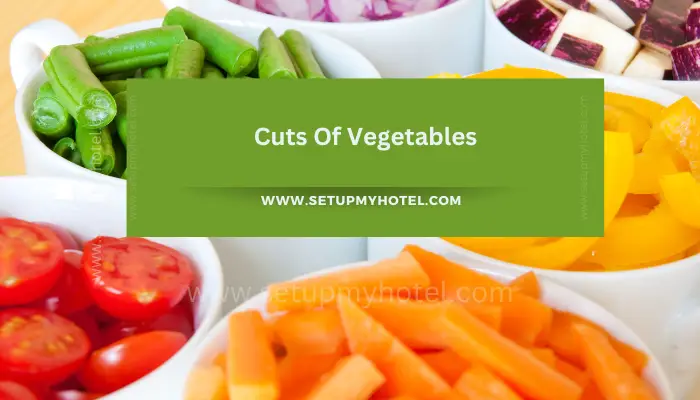Standard Cuts Of Vegetables
Vegetable cuts, as simple as they may seem, play an immense role in creating culinary masterpieces. The way we slice, dice, or mince them can significantly influence the appearance, cooking time, texture, and flavour of our dishes.
Therefore, it becomes pivotal to grasp the understanding and practice of various cutting techniques. In this journey, we’re also going to gain intimate knowledge of adapting suitable cutting tools, correct vegetable preparation methods, and ensuring hygiene and safety in our workspace. By embracing these critical aspects, you’ll be elevating more than just your cooking skills, but your experience and appreciation of the art of gastronomy.
Understanding Different Vegetable Cuts
Understanding Different Types of Vegetable Cuts
In culinary arts, there are various methods applied to cut vegetables. These techniques can significantly influence the taste and presentation of your dishes. It is therefore essential to learn the different vegetable cuts like dicing, slicing, and mincing, as well as understand the particular vegetables they are most appropriate for.
Dicing Vegetables
Dicing implies cutting the veggies into cube-like pieces. The shape makes them perfect for stir-fry dishes, stews, and salads. Before dicing, the vegetable is cut into lengthwise and crosswise segments. Vegetables such as bell peppers, potatoes, and tomatoes are often diced.
Slicing Vegetables
The slicing method is frequently used when the presentation of the dish is as important as the taste. Here, the vegetables are cut into thin or thick circles or crosswise cuts. Vegetables like cucumbers, carrots, and zucchini are best sliced.
Mincing Vegetables
Mincing is a fine chop cut, breaking down the vegetable into very tiny pieces. This methodology is used when you want the vegetables to fuse with the rest of the ingredients seamlessly. Items like garlic, onions, and herbs are often minced.
Julienne Vegetables
Julienning is a more specialized cutting method where the vegetable is finely chopped into long, thin pieces that resemble matchsticks. The purpose of this technique is primarily for presentation in dishes like coleslaw, stir-fry, and salads. Vegetables such as carrots, zucchini, and bell peppers are commonly julienned.
Cubing Vegetables
Cubing is slicing the vegetable into bigger chunks. This cutting method works well in roasts, stews, and foods that require long and slow cooking times, like potatoes and yams.
Chiffonade Vegetables
To chiffonade vegetables signify that you roll leafy vegetables or herbs up like a cigar and then finely slice them to create elegant, thin ribbons. This technique is typically used for leafy veggies such as spinach, basil, or lettuce, and is often used in salads or as garnish.
Note: Checkout the List of all Cut of Vegetables
Learning these different cutting techniques can enhance the texture and flavor of your dishes by ensuring you get the most out of your vegetables. Understanding these methods will also make your cooking experience much more fluid and enjoyable.
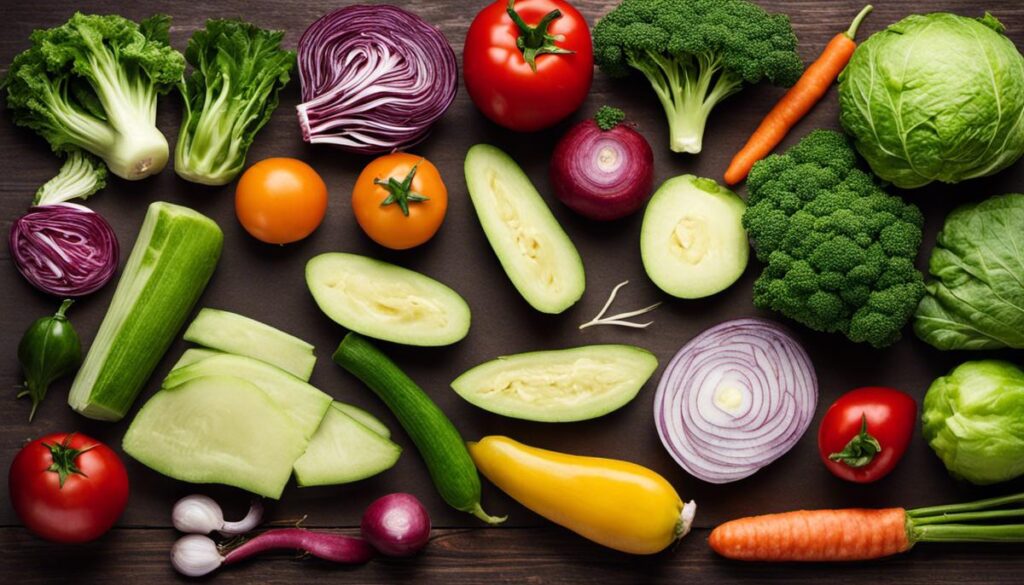
Selection and Handling of Cutting Tools
Selection of Cutting Tools for Vegetables
Different vegetables have different physical properties such as texture and density. This is why some cutting tools are more suited than others for specific types of vegetables. A chef’s knife, utility knife, paring knife, and vegetable knife are some of the knives you may find useful in your kitchen.
- A chef’s knife, with a broad, tapered shape and a fine sharp edge, is the most versatile and can be used for a variety of vegetables from hard root vegetables to softer leafy greens.
- A utility knife, smaller than a chef’s knife but larger than a paring knife, is perfect for mid-size vegetables like bell peppers and onions.
- A paring knife, small with a sharp blade, is suitable for smaller tasks like peeling, deseeding, and cutting small vegetables.
- A vegetable knife with a serrated edge can be used to cut through hard vegetables with thick skins like pumpkins without slipping.
Safe Handling of Cutting Tools
Knives and other cutting tools are sharp and can be dangerous if not handled properly. Follow these safety tips:
- Always hold a knife by the handle and keep your fingers away from the blade.
- Cut on a stable surface, ideally a wooden or plastic cutting board.
- Always cut in a motion away from your body to prevent injuries.
- Never attempt to catch a falling knife.
- Keep knives out of reach of children and pets.
Essential Maintenance Tips for Cutting Tools
Maintaining your knives correctly ensures they stay sharp and safe to use for a longer period.
- Cutting tools should be cleaned immediately after use. Never leave them soaking in water as this can dull and damage the blades.
- Hand wash your knives with warm soapy water, rinse, then dry thoroughly.
- Regularly sharpen your knives using a honing steel or knife sharpener as dull knives are more likely to slip and cause injuries.
- Store your knives in a knife block or magnetic strip, not loose in a drawer. This prevents the blades from being damaged and minimizes the risk of accidental injury.
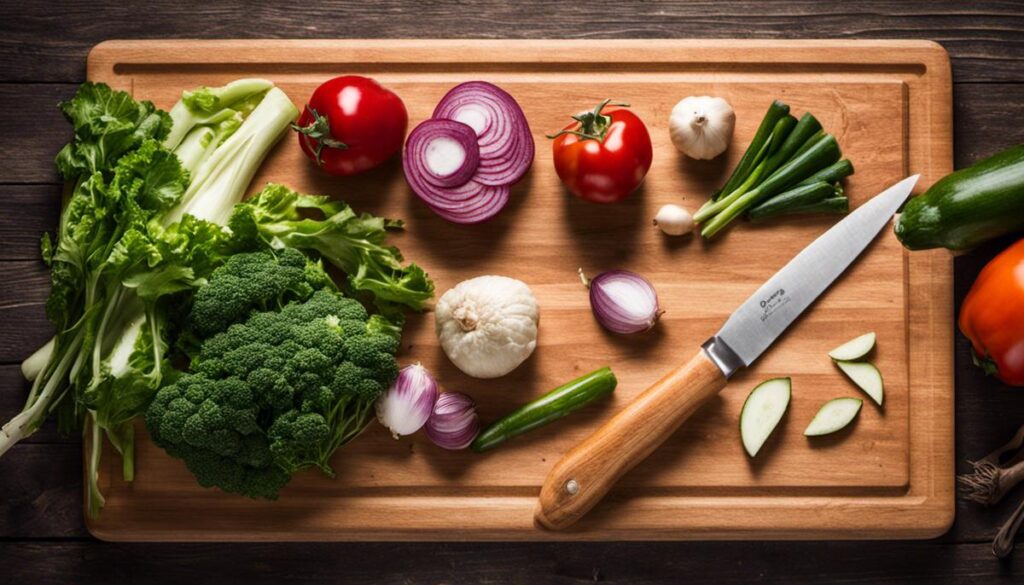
Preparation Techniques for Different Vegetables
Preparing Carrots
Start by washing your carrots under running water, and using a brush if necessary to remove any dirt. Next, remove the top and bottom end of the carrot. The skin of the carrot can be quite tough and may negatively impact the texture of your dish. To remove it, use a vegetable peeler, starting at the top and running it down the length of the carrot. Always peel away from your body to avoid injuries. Then, cut according to your recipe requirements.
Preparing Bell Peppers
Begin by washing the bell pepper under running water. Pat dry and ensure all dirt has been removed. Cut around the top of the pepper and gently remove the stem. This should also remove the core and seeds. These parts can be disposed of as they can be slightly bitter and can affect the overall taste of your dish. Slice the pepper down one side and then open it out flat. Remove any remaining ribs or seeds. Finally, slice or dice the pepper as your recipe demands.
Preparing Courgettes (Zucchinis)
Rinse your courgette under running water. You don’t need to peel a courgette; the skin is soft and adds a nice texture to your dish. Cut off both ends of the courgette. Slice or dice it according to your recipe requirements.
Preparing Tomatoes
Begin by washing the tomatoes under running water. Removing the seeds from a tomato reduces its moisture content which can be beneficial for certain recipes. To de-seed, cut the tomato in half horizontally and gently squeeze each half over a bowl or sink. Most seeds should come free with this process, use a spoon to scrape any remaining seeds. Slice or dice the tomato according to your recipe requirements.
Preparing Onions
Onions can be a bit tricky to deal with due to the tears they cause when cut. Start by cutting off the top of the onion, leaving the root end intact. The root end has less of the tear-inducing compound, so this method minimizes tears. Then, peel off the outer layer of the onion skin. Following this, cut the top of the onion down towards the root, slicing it in half. Place the cut side down on your chopping board and then slice or dice as recommended by your recipe.
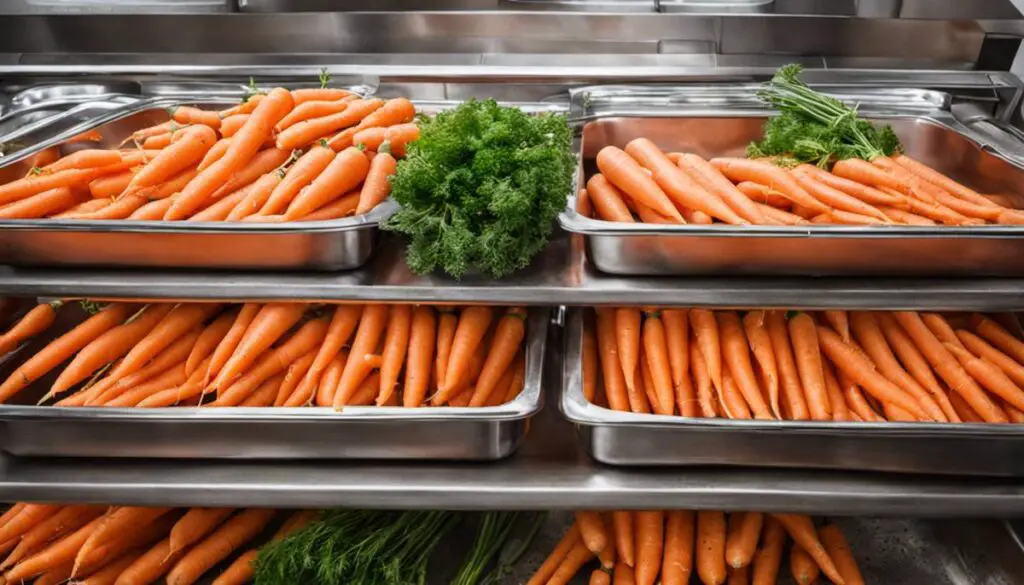
Practical Knife Skills
Understanding Knife Skills Importance
Knife skills are incredibly important in the kitchen as they help ensure safety, improve precision, minimize waste, and save time. Mastering these skills allows one to handle a range of food items, especially vegetables, with ease and consistency, which greatly improves the overall cooking experience and outcomes.
Knife Safety and Practice
To practice knife safety, always keep your knives sharp. A dull knife is more dangerous as it requires more force to use and is more likely to slip. When using a knife, hold it firmly with the handle resting in your palm. The fingers of your other hand should guide the blade while remaining tucked inwards to avoid accidental cuts. Always cut with a downward movement, pushing the blade away from your body.
Practical Knife Skills: Chopping
For chopping vegetables, use a large chef’s knife and lay the vegetables on a stable cutting board. Hold the knife in your dominant hand, and use the other hand to hold the vegetable firmly, with the fingers curled back. Slice into the vegetable in one smooth movement, keeping the tip of the knife on the board as a pivot and moving the back of the knife up and down.
Practical Knife Skills: Dicing
Dicing vegetables involves cutting them into small, even squares. Start by chopping off the ends of the vegetable to create a flat stable base. Cut the vegetable lengthwise into slices, and then stack these slices and cut into long strips. Rotate these strips and cut them crosswise to create evenly-sized cubes or dice.
Practical Knife Skills: Slicing
For slicing vegetables, hold the knife in one hand and the vegetable in the other with your fingers curled in a claw shape. Make a series of parallel cuts into the vegetable, pushing the knife away from you and lifting it back towards you in a rhythmic action. Keep the fingers of your guiding hand moving so that the knife is always cutting in a safe, controlled manner.
Hands-on Skills Improvement and Precision
Practicing these skills on a variety of vegetable types will help to steadily improve your precision and speed. Start with larger, harder vegetables like carrots or potatoes, and then move on to more delicate items like tomatoes or herbs. Remember, precision comes with practice, so keep at it until you are comfortable with your technique. It is also essential to maintain a clean and orderly work area to ensure safety, efficiency, and consistency in your cuts.
Correct Knife Usage and Care
Always use each knife for its intended purpose, and never use a chef’s knife to do a utility knife’s job, or vice versa. After usage, clean your knives promptly and dry them to prevent rusting or dulling of the blade. Store them safely in a knife block or magnetic strip, away from other utensils. Regular honing and occasional professional sharpening will ensure your knives stay in top condition.
Through patient practice and a focus on safety, you can refine your knife skills, making your cooking more efficient, enjoyable, and of a higher standard.
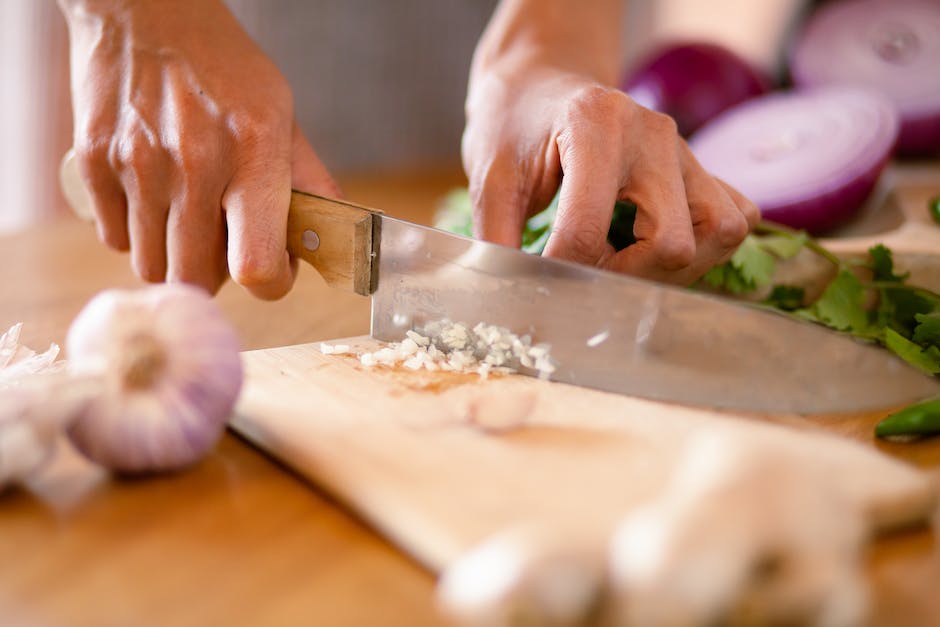
Hygiene and Safety Procedures
Hygiene and Safety Measures when Handling Vegetables
The first essential step in ensuring hygiene while preparing vegetables is thorough hand washing. Use warm water and soap to scrub your hands for at least twenty seconds before and after handling the vegetables. Non-disposable plastic or rubber gloves can be worn for added protection.
All vegetables should be rinsed under running water and scrubbed lightly with a vegetable brush to remove dirt, bacteria, and potential chemical residues. Be sure to rinse the vegetables even if you plan on peeling them as bacteria can transfer from the outer peel to the inside as you cut.
Correct Use of Kitchen Tools
It is important to use clean and sharp knives for cutting vegetables. Dull knives can lead to accidents as they may slip instead of cutting the vegetable. The cutting board should be specifically designated for vegetables and not used for raw meat or fish. This prevents cross-contamination that can lead to severe foodborne illnesses.
Always ensure any knife block or drawer in which knives are stored is clean and dry. It is recommended to wash and thoroughly dry your tools after use to prevent bacteria build-up that may occur when left without cleaning.
Storing Cut Vegetables
Once the vegetables have been cut, it is necessary to store them properly to preserve freshness and prevent cross-contamination. Cut vegetables, especially leafy greens, can spoil quickly when exposed to air. To combat this, store them in airtight containers.
The optimal place for storing cut vegetables is inside the refrigerator between 1°C and 5°C. This will keep the freshness for at least 2-3 days. Vegetables should be stored separately from raw meat, seafood, and poultry products to avoid cross-contamination.
It’s recommended to use fresh-cut vegetables as soon as possible, and not to wash them until just before use. The extra moisture can encourage bacterial growth and speed up the spoiling process.
Adhering to these procedures allows for maintaining the utmost hygiene and safety standards while handling and storing vegetables. Good practices not only assure the best quality of your final produce, but they also help protect you and those consuming the dishes from potential health risks.
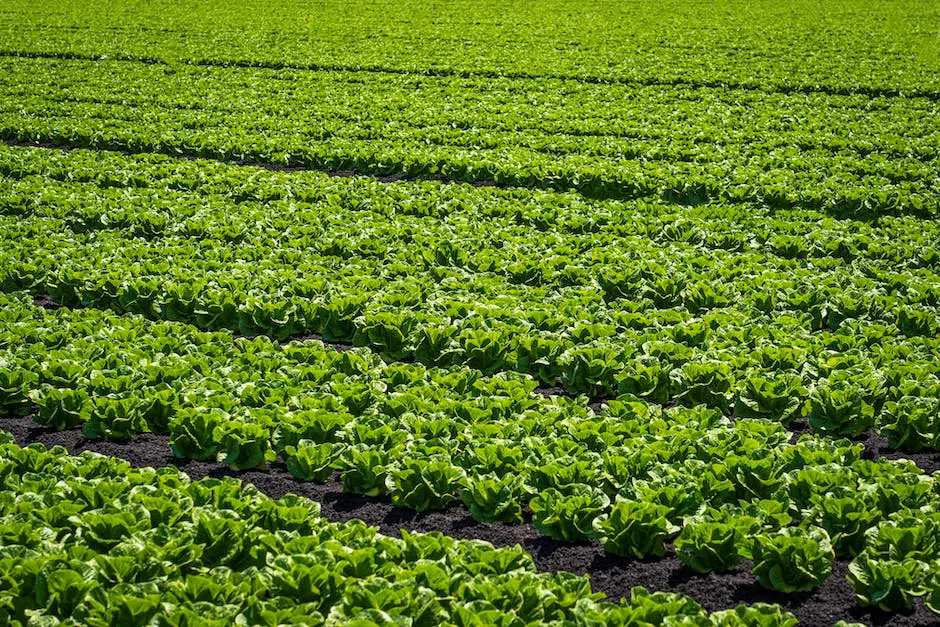
Exploring the mesmerizing world of vegetable cuts, it's evident that they are much more than simple actions with a knife; they are the silent influences that define the soul of your dish. The knowledge of the correct technique, tools, and preparation methods is an unmistakable sign of culinary proficiency. Finally, respecting hygiene and safety practices is a testament to your commitment to creating not just tasty, but healthy and safe, food. Remember, each vegetable has its uniqueness, and understanding how to handle it is at the heart of becoming a skilled culinarian. Armed with this knowledge and practice, you are ready to embark on a journey of beautiful plates and happy tastebuds.
